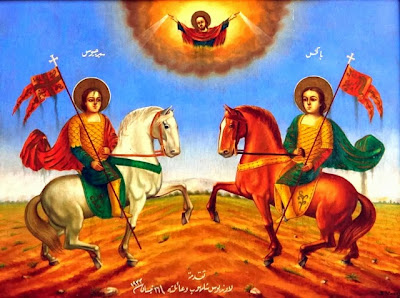“Bernard of Clairvaux” by Rowan Lewgalon
See how I yearn, and longing turn to Thee!
Yield to my love, and draw me unto Thee!
--Bernard of Clairvaux
Bernard of Clairvaux was a medieval French abbot who wrote homoerotic poetry about Jesus had a passionate same-sex friendship with the Irish archbishop Malachy of Armagh. Bernard is best known for founding 70 monasteries around Europe and for his mystical writings. His feast day is Aug. 20 (today).
His first love was Jesus, but he showered Malachy with kisses during his lifetime. After Malachy died in his arms, they exchanged clothes. Malachy was buried in Bernard’s habit. Bernard put on Malachy’s habit to lead the funeral and wore it until his own death five years later. Bernard was buried beside Malachy, again in Malachy’s habit. Malachy (1094-1148) became the first native born Irish saint to be canonized.
Bernard (1090-1153) was advisor to five Popes and a monastic reformer who built the Cistercian order of monks and nuns. He is known as the last of the Church Fathers. The most famous saying attributed to him is: “The road to hell is paved with good intentions.”
He was a man of his time who engaged in rigorous ascetic practices and supported church teachings on celibacy. People today might say that he had a homosexual orientation while abstaining from sexual contact. Medieval mystics created alternative forms of sexuality that defy contemporary categories, but might be encompassed by the term “queer.” They directed their sexuality toward God and experienced God’s love through passionate friendship with another human being.
Monasteries and convents provided a social structure outside marriage, attracting many people that today would be defined as LGBT. Medieval monks and nuns who lived in same-sex communities under a vow of celibacy developed alternative ways of same-sex living and loving.
“Christ Embracing St. Bernard of Clairvaux” by Francisco Ribalta
Bernard’s strict asceticism was balanced by sweetly erotic visions that earned him the title Doctor Mellifluus (“honey-tongued doctor.”) He chose to use the Song of Songs, the most erotic book in the Bible, as a major vehicle for his teaching. He began his “Sermons on the Song of Songs” in 1135 and had completed 86 sermons when he died nearly 20 years later with the series still unfinished.
“Jesus to me is honey in the mouth, music in the ear, a song in the heart,” he wrote in his 15th sermon on the Song of Songs.
His lesser known works include “Life of Saint Malachy of Armagh,” which is his idealized tribute to the man he loved, and “Salve Mundi Salutare” (quoted below), a love poem to Jesus whose original homoeroticism has been suppressed. It became the basis for the popular English hymn “O Sacred Head, Now Wounded.”
Bernard of Clairvaux’s legacy is a mixed blessing for contemporary progressive readers because he also helped rally soldiers to kill Muslims in the Second Crusade and undermined the work of theologian Peter Abelard, a champion of reason. But he spoke out against Christian mistreatment of Jews and supported another queer mystic, Hildegard of Bingen, in her efforts to get her visions published.
Bernard was born to a noble family in 1090 on the outskirts of Dijon in Burgundy. According to legend, his mother had a dream during her pregnancy that a white puppy was barking in her womb. This was interpreted to mean that she would give birth to God’s watchdog. The white dog became one of Bernard’s attributes, a symbol used in images of the saint.
Bernard and a white dog, both with icy blue eyes, appear together in a striking contemporary portrait by Rowan Lewgalon. She is a spiritual artist based in Germany and a cleric in the Old Catholic Apostolic Church.
When Bernard was 19, his mother died and he decided to join a small new community that had just started in the area. They were called the Cistercians, and their aim was to reform monasticism with a return to the more austere rules of St. Benedict. Within three years Bernard was sent to found a monastery nearby in a place whose name has become part of his own: Clairvaux.
About 25 years later Bernard met Malachy (whose Irish name is Maelmhaedhoc O’Morgair). He was primate of all Ireland when he first visited Clairvaux around 1139. Bernard was nearly 50 years old and Malachy was four years younger. They soon became devoted, passionate friends. Malachy even asked the Pope for permission to become a Cistercian, but the Pope refused.
Malachy traveled to see Bernard again in 1142. They were so close that Bernard covered him with kisses in a scene that is described well by Orthodox priest Richard Cleaver in “Know My Name: A Gay Liberation Theology”: “Bernard's account makes deeply romantic reading for a modern gay man. “Oscula rui,” Bernard says of their reunion: “I showered him with kisses.”
Their relationship had lasted almost a decade when Malachy reunited with Bernard for the third and final time. Malachy fell sick when he arrived in Clairvaux in 1148. He died in Bernard’s arms on All Soul’s Day, Nov. 2. Again Cleaver tells the details based on accounts by Geoffrey, Bernard’s secretary and traveling companion:
“Geoffrey of Auxerre tells us what happened later. Bernard put on the habit taken from Malachy's body as it was being prepared for burial at Clairvaux, and we wore it to celebrate the funeral mass. He chose to sing not a requiem mass but the mass of a confessor bishop: a personal canonization and, incidentally, an example of using liturgy to do theology. Bernard himself was later buried next to Malachy, in Malachy’s habit. For Bernard, as for us today, this kind of passionate love for another human being was an indispensable channel for experiencing the God of love.”
After Malachy’s death Bernard lived on for another five years. He forbid sculptures and paintings at the monastery during his lifetime, but by the late 15th century the altarpiece at the Clairvaux Abbey had a painting of Christ’s baptism jointly witnessed by Bernard and Malachy.
Bernard died on Aug. 20, 1153 at age 63. He was buried at the Clairvaux Abbey next to Malachy, wearing Malachy’s habit. He had lived for 40 years in community with other men whose loving relations with each other brought them closer to God.
“Bernard of Clairvaux” by Tobias Haller
“Bernard of Clairvaux” was sketched as an intense man with a rusty beard by Tobias Haller, an iconographer, author, composer, and vicar of Saint James Episcopal Church in the Bronx. He is the author of “Reasonable and Holy: Engaging Same-Sexuality.” Haller enjoys expanding the diversity of icons available by creating icons of LGBTQ people and other progressive holy figures as well as traditional saints. He and his spouse were united in a church wedding more than 30 years ago and a civil ceremony after same-sex marriage became legal in New York.
A prayer written by Bernard’s secretary Geoffrey shows how the community at Clairvaux understood and celebrated the man-to-man love between Bernard and Malachy. He thanks God for these “two stars of such surpassing brightness” and “twofold treasure.”
As a monk, Bernard naturally directed much of his erotic energy toward Jesus Christ. This attitude is beautifully expressed in his poem “Salve Mundi Salutare” (Savior of the World, I Greet You). He wrote seven sections, each addressed to a different parts of Jesus’ crucified body: his feet, knees, hands, side, chest, face, and finally his heart.
The poem is traditionally attributed to Bernard of Clairvaux, although some modern scholars believe it may have been written by another Cistercian abbot, Arnulf of Leuven. It is also known as the “Oratio rhythmica ad singula membra Christi a cruce pendentis” (Rhythmical Prayer to the Sacred Members of Jesus Hanging on the Cross), or more simply as the Rhythmica oratio.
The original poem, in all its erotic glory, is generally not included in books that collect Bernard’s “essential writings.” It lives on in ancient, hard-to-find editions and heavily edited versions and translations that remove much of the homoeroticism and sometimes even add heterosexual references that are absent from Bernard’s original Latin. The original is also blessedly free from churchy terms like “Lord,” speaking only of the love between “I” and “thou.”
The poem is the basis for important musical works such as the hymn “O Sacred Head, Now Wounded” and the Baroque oratorio “Membra Jesu Nostri” (usually translated as “The Limbs of Our Jesus”) written by Baroque Danish composer Dieterich Buxtehude in 1680, more than 500 years after Bernard died. The cycle of seven cantatas is considered to be the first Lutheran oratorio. The entire oratorio can be heard on video at this link.
The rapture of this poem is expressed in the painting at the top of this post: “Christ Embracing St. Bernard” by Francisco Ribalta. The Spanish Baroque artist apparently painted this masterpiece for the Carthusian monastery of Porta Coeli in Valencia, Spain around 1625.
The website for Spain’s Prado Museum in Madrid, where it is now housed, states: “The scene is based on one of the saint’s mystical visions, drawn from one of the most popular religious books of the Baroque era: Pedro de Ribadeneyra’s ‘Flos Sanctorum’ or ‘Book of the Lives of the Saints,’ published in 1599.”
The whole poem contains 74 verses of five lines each -- way too many to reproduce here. But it is extremely hard to find, so a selection of the more erotic, lesser known verses are reproduced here in the original Latin with an English translation from by Emily Mary Shapcote. Her translation was published in the 1881 book “St. Bonaventure’s Life of our Lord and Saviour Jesus Christ.” The online version of that book contains the entire poem in its appendix.
In a few cases a computer-generated English translation is also included here because it captures the directness and immediacy of the original. Much of the homoeroticism is implicit in the fact that this love poem was written by one man to another -- from Bernard to Jesus with love.
References to this poem and numerous paintings of Bernard with Christ are included in a whole chapter devoted to Bernard in the 2013 book “Saintly Brides and Bridegrooms: The Mystic Marriage in Renaissance Art” by Carolyn D. Muir, art professor at the University of Hong Kong.
___
To the Hands
Ad Manus
IX.
O Jesus, place Thy sacred Hands on me,
With transport let me kiss them tenderly,
With groans and tears embrace them fervently;
And, O for these deep wounds I worship Thee;
And for the blessed drops that fall on me.
Manus sanctse vos amplector,
Et gemendo condelector,
Grates ago plangis tantis
Clavis duris, guttis sanctis,
Dans lacrymas cum osoulis
To the Side
Ad Latus
VII.
Lord, with my mouth I touch and worship Thee,
With all the strength I have I cling to Thee,
With all my love I plunge my heart in Thee,
My very life-blood would I draw from Thee,
Jesus, Jesus I draw me into Thee.
Google translate version:
You happen to my mouth,
And I ardently embrace
SOAK you in my heart,
And a warm heart, tongue,
Me all over you.
Ore meo te contingo,
Et ardenter ad me stringo
In te meum cor intingo,
Et ferventi corde lingo,
Me totum in te traiice.
To the Breast
Ad Pectus
VIII.
Abyss of wisdom from eternity,
The harmonies of angels worship Thee;
Entrancing sweetness flows, Breast, from Thee
John tasted it as he lay rapt on Thee;
Grant me thus that I may dwell in Thee.
Tu abyssus es sophise,
Angelorum harmonise
Te collaudant, ex te fluxit
Quod Joannes Cubans suxit,
In te fac ut iuliabitem.
To the Heart
Ad Cor
VI.
O sinner as I am, I come to Thee;
My very vitals throb and call for Thee;
O Love, sweet love, draw hither unto me!
O Heart of Love, my heart would ravished be,
And sicken with the wound of love for Thee!
Per medullam cordis mei,
Peccatoris atque rei,
Tuus amor transferatur,
Quo cor totum rapiatur,
Languens amoris vuluere.
VII.
Dilate and open, Heart of love, for me,
And like a rose of wond'rous fragrance be,
Sweet Heart of love, united unto me;
Anoint and pierce my heart, O Love, with Thee,
How can he suffer, Lord, who loveth Thee?
Google Translate version:
Spread, open,
Wonderfully smelling like a rose,
Join you in my heart,
MARK and anoint it,
Who does what he loves you!
Dilatare, aperire,
Tanquam rosa fragrans mire,
Cordi meo te conjunge,
Unge illud et compunge,
Qui amat te quid patitur!
IX.
Mv living heart, O Love, cries out for Thee;
With all its strength, O Love, my soul loves Thee;
O Heart of Love, incline Thou unto me,
That I with burning love may turn to Thee,
And with devoted breast recline on Thee.
Viva cordis voce clamo,
Dulce cor, te namque amo;
Ad cor meum inclinare,
Ut se possit applicare,
Devoto tibi pectore.
XI.
Thou Rose of wondrous fragrance, open wide,
And bring my heart into Thy wounded Side,
O sweet Heart, open! Draw Thy loving bride,
All panting with desires intensified,
And satisfy her love unsatisfied.
Rosa cordis aperire,
Cujus odor fragrat mire,
Te dignare dilitare,
Fac cor meum anhelare,
Flam ma desiderii.
[Note that the original Latin has absolutely no references to brides or any gender at all. This is the only verse quoted here that is also included in Buxtehude’s oratorio “Membra Jesu Nostri”.]
XIII.
O Jesus, draw my heart within Thy Breast,
That it may be by Thee alone possessed.
O Love, in that sweet pain it would find rest,
In that entrancing sorrow would be blest,
And lose itself in joy upon Thy Breast.
Google Translate version:
Put in your pocket
Heart, that you should take a neighbor,
Joyful in pain,
With ugly and beautiful
That hardly contain himself.
Infer tuum intra sinum
Cor, ut tibi sit vicinum,
In dolore gaudioso,
Cum deformi specioso,
Quod vix seipsum capiat.
___
*Quotation at the top is Shapekote's translation of:
Cordis mei Cor dilectum,
In te meum fer aflectum,
Hoc est quod opto plurimum.
Direct translation:
Heart of my heart, beloved,
You bring in my feelings,
This is what I love most.
___
To read this post in Spanish / en español, go to Santos Queer:
San Bernardo de Claraval y San Malaquías: "el doctor meloso" y el arzobispo a quien amaba
It includes an original Latin-to-Spanish translation of the poem exclusively for Santos Queer by an important professor in Argentina: Dr. Luis Angel Sanchez, Professor of Latin Language and Culture at the University of Cordoba.
___
Related links:
Catholic Queer Families: SS Bernard of Clairvaux and Malachy (Queering the Church)
St. Bernard of Clairvaux’s Life of Saint Malachy of Armagh (full text)
“Rhythmical Prayer to the Sacred Members of Jesus Hanging Upon the Cross” by Bernard of Clairvaux. Full text in Latin and English. (scroll down to find is as an appendix of “St. Bonaventure's Life of our Lord and Saviour Jesus Christ”)
Life of St. Malachy by Bernard of Clairvaux
Malachy of Armagh: Same-sex soulmate to Bernard of Clairvaux (Jesus in Love)
____
This post is part of the GLBT Saints series by Kittredge Cherry at the Jesus in Love Blog. Saints, martyrs, mystics, prophets, witnesses, heroes, holy people, humanitarians, deities and religious figures of special interest to lesbian, gay, bisexual and transgender (LGBT) and queer people and our allies are covered on appropriate dates throughout the year.
Copyright © Kittredge Cherry. All rights reserved.
http://www.jesusinlove.blogspot.com/
Jesus in Love Blog on LGBT spirituality and the arts







 . Rustin states:
. Rustin states:
 and books such as
and books such as  by historian John D’Emilio. The book "
by historian John D’Emilio. The book "



 . Many thanks to Alex for permission to post the controversial painting here.
. Many thanks to Alex for permission to post the controversial painting here. 






 by cultural historian Marina Warner shows how the figure of Mary was shaped by goddess legends and other historical circumstances, resulting in an inferior status for women.
by cultural historian Marina Warner shows how the figure of Mary was shaped by goddess legends and other historical circumstances, resulting in an inferior status for women. 




















 ” by
” by  , a novel about a young Catholic brother torn between his sexuality and his spirituality as an out and proud gay man.
, a novel about a young Catholic brother torn between his sexuality and his spirituality as an out and proud gay man. is a complete and uplifting documentary on Father Mychal’s life, including his gay orientation and his support for LGBT rights. Its producers include Brendan Fay, who directed “
is a complete and uplifting documentary on Father Mychal’s life, including his gay orientation and his support for LGBT rights. Its producers include Brendan Fay, who directed “


 . Von Trotta is one of the world’s most important feminist filmmakers and a leader of independent German cinema. Von Trotta allows Hildegard to speak for herself by using a script based on Hildegard’s own writings and a soundtrack filled with Hildegard’s music. Watch a
. Von Trotta is one of the world’s most important feminist filmmakers and a leader of independent German cinema. Von Trotta allows Hildegard to speak for herself by using a script based on Hildegard’s own writings and a soundtrack filled with Hildegard’s music. Watch a 

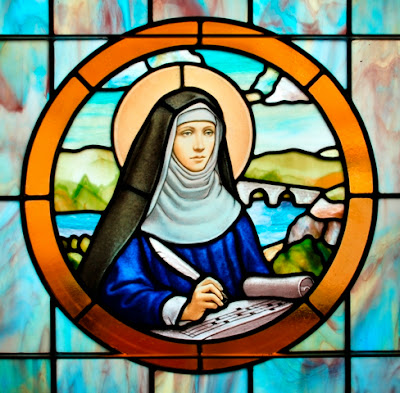


 .” Her music is still just as beautiful today.
.” Her music is still just as beautiful today. 

 .
.


 ,
,  , and
, and  .
. by Michael Ford. Despite his loneliness and same-sex attractions, there is no evidence that Nouwen ever broke his vow of celibacy.
by Michael Ford. Despite his loneliness and same-sex attractions, there is no evidence that Nouwen ever broke his vow of celibacy. 
 :
:



 .” He was silenced by the Vatican and expelled from the Jesuit order for coming out and promoting LBGT rights in church and society.
.” He was silenced by the Vatican and expelled from the Jesuit order for coming out and promoting LBGT rights in church and society.  ,” “
,” “ ,” “
,” “ ” and “
” and “ .”
.”
 .”
.”




 . It was forbidden both because of its homoerotic content and because it promotes the “blasphemy” that one must go beyond religion in order to experience God.
. It was forbidden both because of its homoerotic content and because it promotes the “blasphemy” that one must go beyond religion in order to experience God. , which has translations by Coleman Barks with John Moyne. For the whole poem, visit
, which has translations by Coleman Barks with John Moyne. For the whole poem, visit 

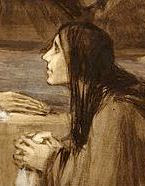
 by Thomas of Celano, a follower of Francis who knew him personally. The biography was completed by 1230, just four years after Francis died. Celano says that when Francis was in his 20s, before embracing a life of poverty, he dearly loved a special male friend:
by Thomas of Celano, a follower of Francis who knew him personally. The biography was completed by 1230, just four years after Francis died. Celano says that when Francis was in his 20s, before embracing a life of poverty, he dearly loved a special male friend:
 by Kittredge Cherry.
by Kittredge Cherry.

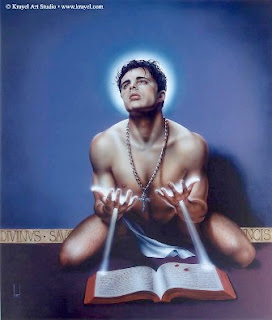















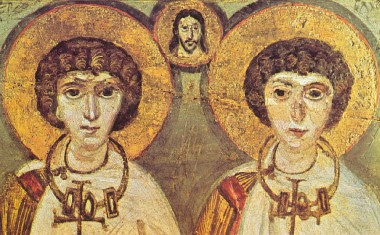
 ”. (The others are
”. (The others are 
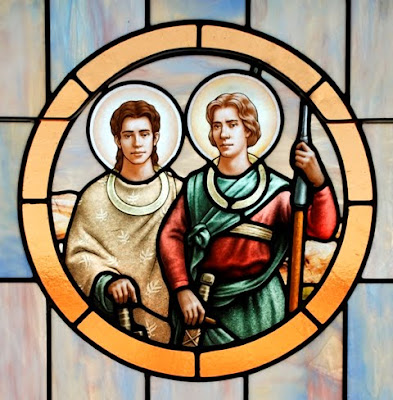
 . The book includes a chapter retelling the love story of Sergius and Bacchus with historical detail.
. The book includes a chapter retelling the love story of Sergius and Bacchus with historical detail.



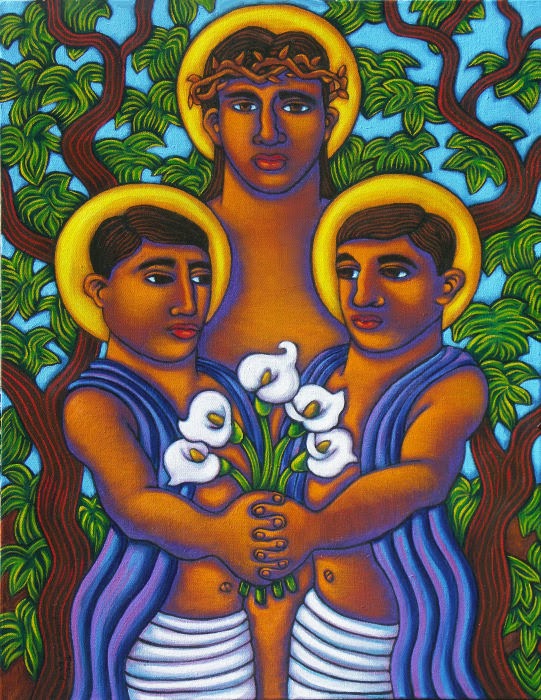

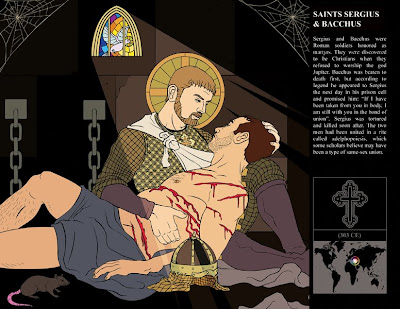

 .
.
